Postcards from the Namib Desert
Sometime in mid 2013, I came across this photo:
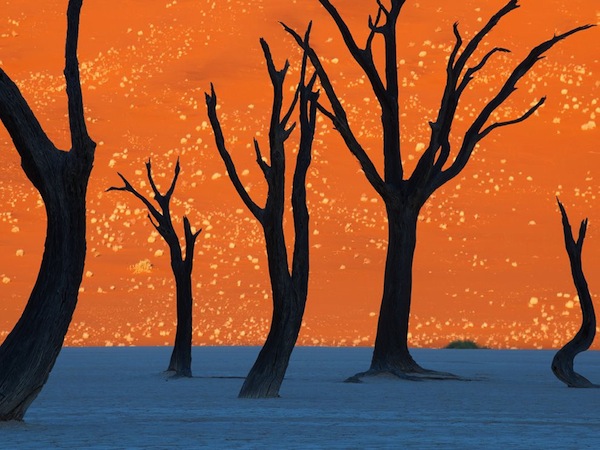
(photo by Frans Lanting)
I don’t remember where I saw the photo but it came with a link to the National Geographic website. This was a real photograph of a real place, not a painting, I read, and the photo was taken in Namibia. That was all I needed to know. As far as I was concerned, that photo did it for me. That was it. I knew that I had to go and see those thorn trees for myself.
So off to Namibia I went, only it would be close to six months later when I arrived at its border with South Africa:
Our camp near the border was minutes away from the banks of the Orange River, part of which forms the boundary with South Africa.
One of Namibia’s natural highlights is Fish River Canyon, which is the second largest after the Grand Canyon. I’ve been to the Grand Canyon before but the Fish River Canyon, although smaller, is a wonder in itself. It isn’t as busy, the sky seemed clearer and you’ve got those incredible clouds and sunsets:
I decided to look away from the sun and turned around. That was when I saw the canyon behind me lighting up like a flame.
Two days later we entered the Namib Desert. The Namib (which means ‘vast place’ in the Nama language) has existed for some 55 million years, making it the oldest desert in the world. The dunes of the Namib are a deep orange colour from the oxidation of iron particles in the sand, kind of like how rust sets in over time. The deeper the shade of orange, the more rust there is in the sand, and therefore the older the dune.
The dunes at Sossusvlei in the Namib desert are the world’s highest sand dunes, some reaching as high as 360 metres (about 1,181 feet). The most famous is a dune called Dune 45 which is clearly visible by the road, making it the most photographed dune in Namibia.
Dune 45 is only 170 metres high which doesn’t sound very difficult to climb, but it can be. The sand is as fine as talcum powder so your feet sink deeper with every step you take. Minimise your drag by wearing sandals or socks when you climb as shoes will pull you down. Don’t wear shoes on Dune 45 thinking that you won’t get any sand between your toes because the sand will get in anyway. Some people recommend going barefoot which is fine when you go up, but once the sun rises, the sand might be a little hot. That’s right- you go up Dune 45 when it’s still dark so that you can see the sun rise from the summit.
But I had come to Namibia to see the thorn trees in the NatGeo photo, and to see them I had to go to Deadvlei. When I first read about Deadvlei (‘dead marsh’), I found its history fascinating. For thousands of years, this area was once a clay pan where trees used to grow, nourished by a river that flowed through the Namib desert. But due to the process of climate change which took place over hundreds of years, the sand dunes of Sossusvlei gradually encroached onto the clay pan until the sand blocked the flow of the river into the pan, eventually killing the trees.
The clay pan is now no more and all that remains is this- a dry, flat bed surrounded by towering dunes, its dead trees still upright:
One would expect dead trees to wither and decompose, but that’s not what happened to the thorn trees on Deadvlei. Because the environment in Deadvlei is too dry, the trees never decomposed but simply dried up and literally, died standing.
The atmosphere on Deadvlei is, was, will always be, unreal. I walked on what used to be land that was fertile enough for trees to grow but all this stopped nine hundred years ago. I was looking at 900-year-old skeletons of trees that were frozen in time. They were dead, but they were still standing.
I’m not sure how long I spent at Deadvlei but before I left, I took one last look:
© 2014, Anis. All rights reserved.






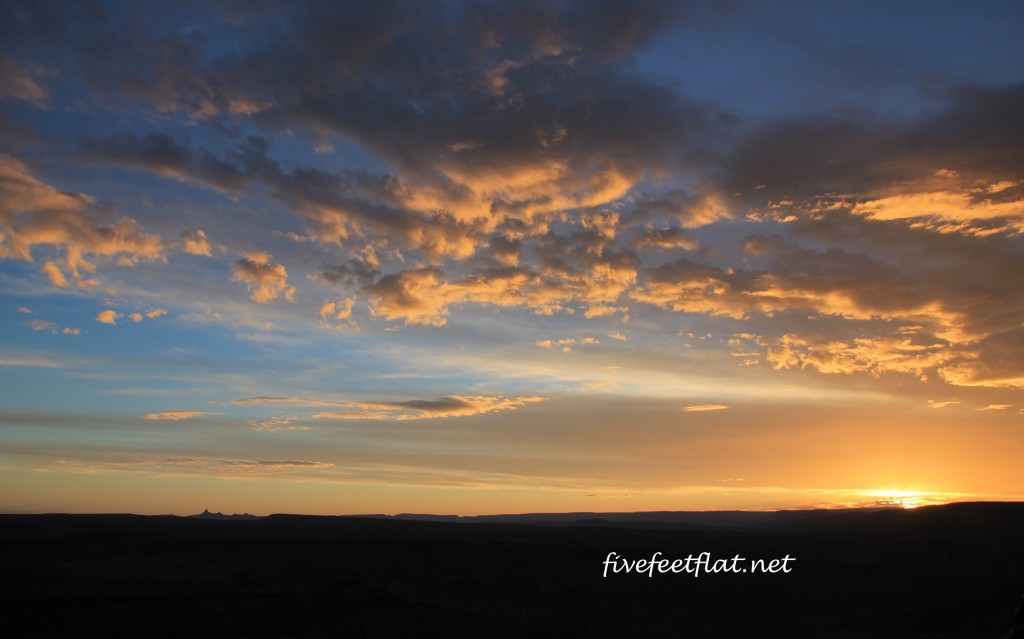


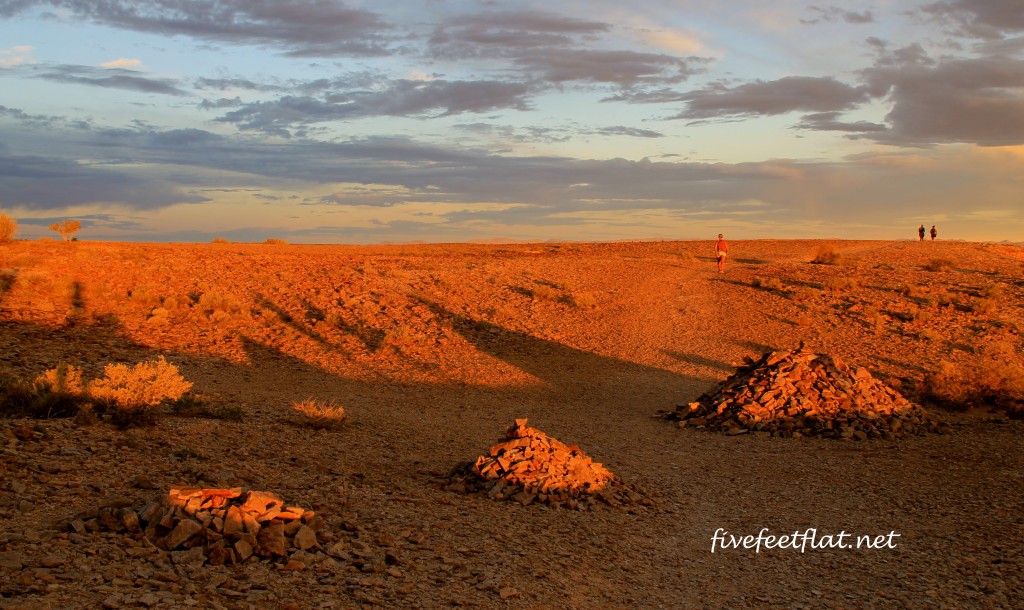
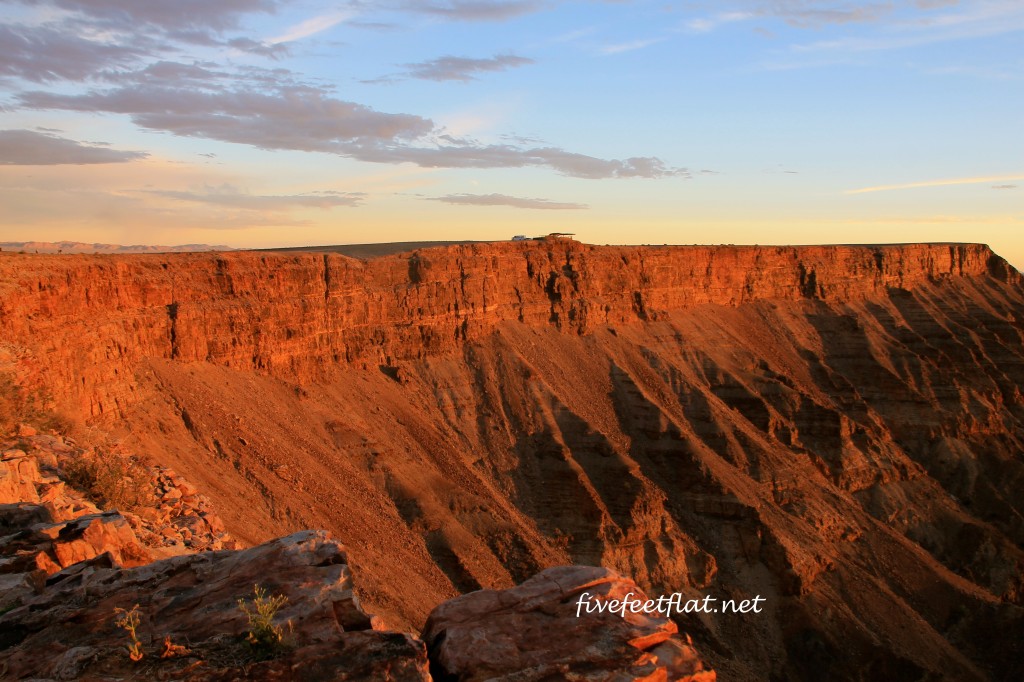
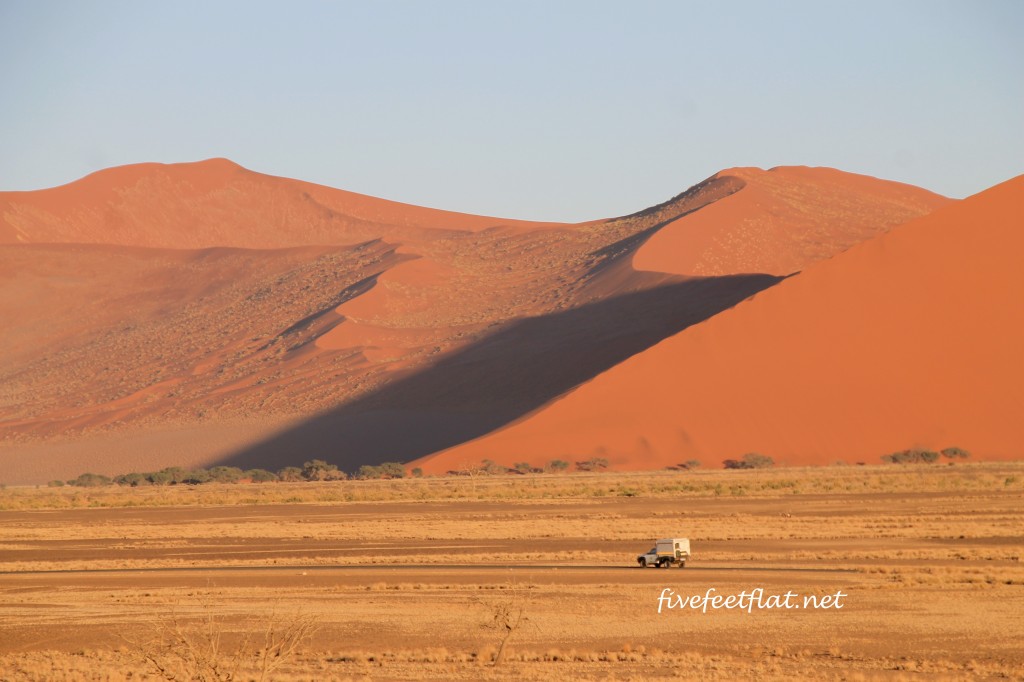

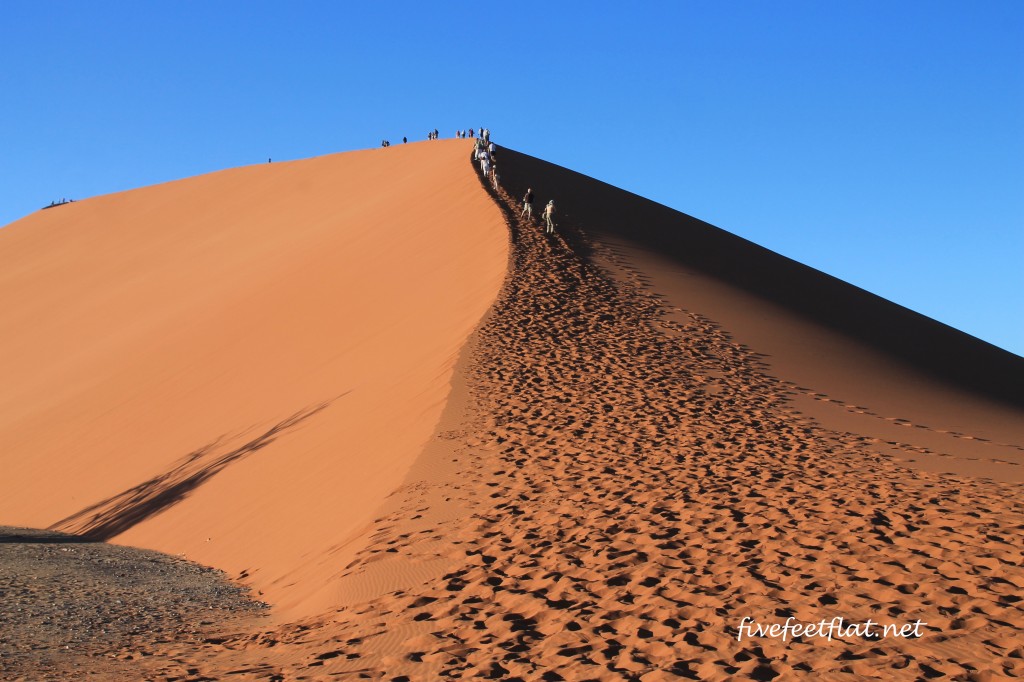





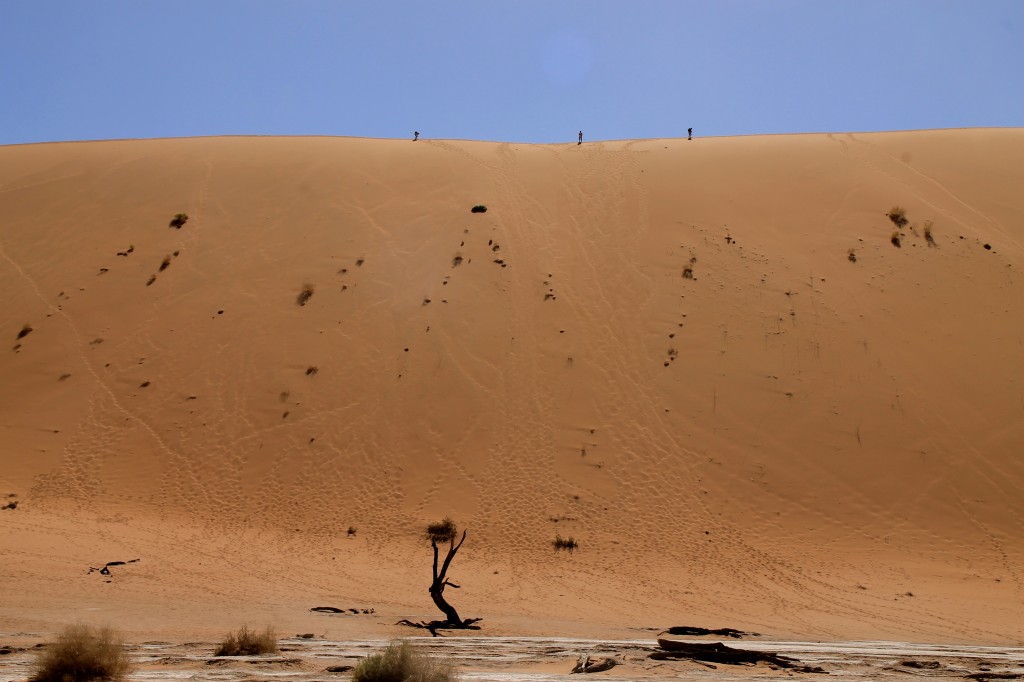








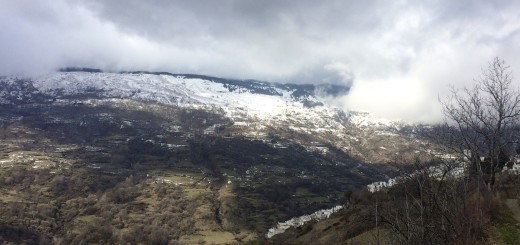

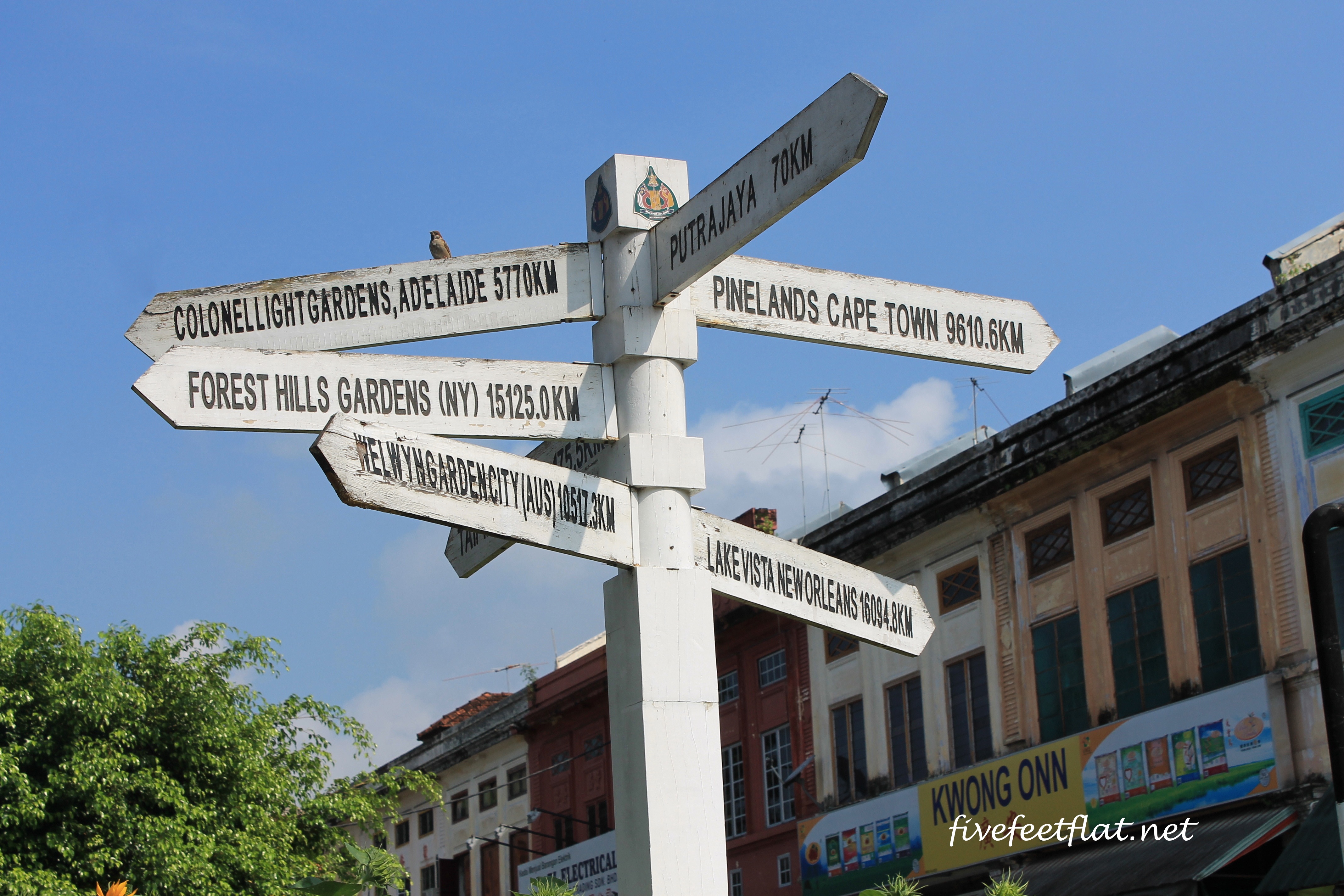


Subhanallah..cantiknya
Memang cantik. Sampai tak terkata 🙂
Love the pictures! Took my breath away!
Thanks Cindy, the desert really was stunning in real life!
Hello Anis. I enjoy reading your travel adventures. Your stories make me want to go places 😉
Thanks! Enjoy Denmark, that’s coming up soon 🙂
Ok, that is one place that I still can’t figure out if I should go there or not. Sounds cool but i’m not dying to go.
Namibia is beautiful, Fabiana! It depends on what you like, of course. I’m not a beach person- I prefer hills and mountains, and I loved being able to camp in the desert 🙂